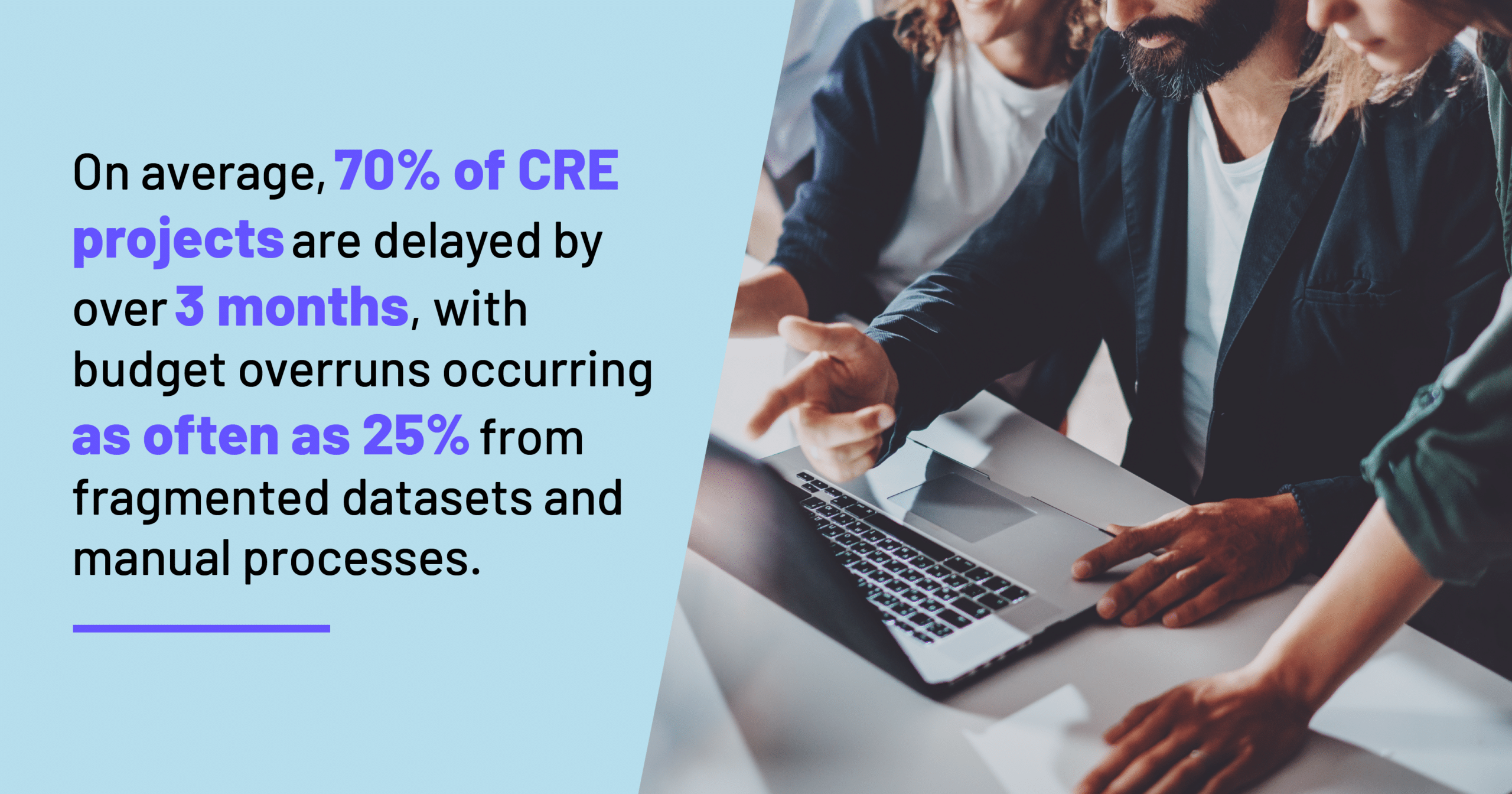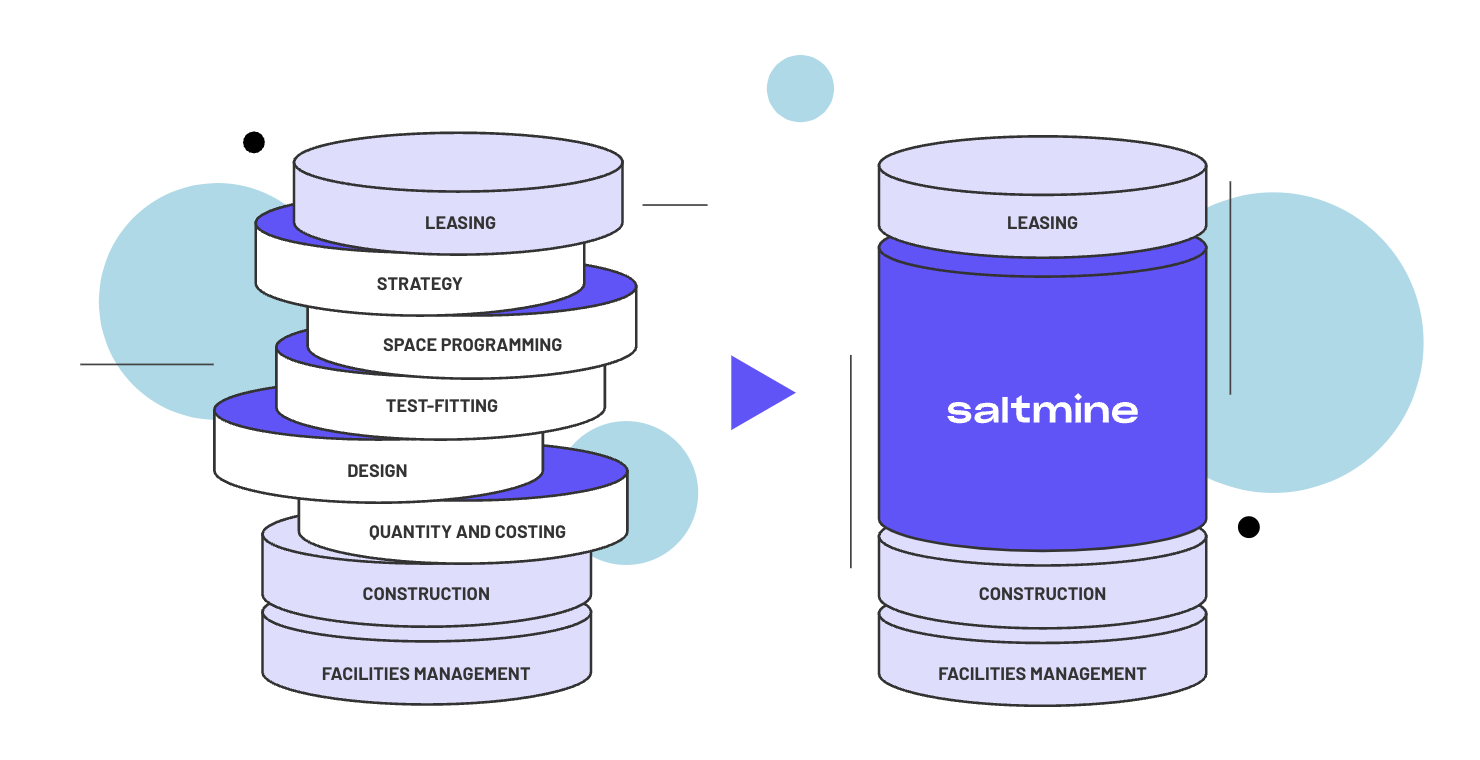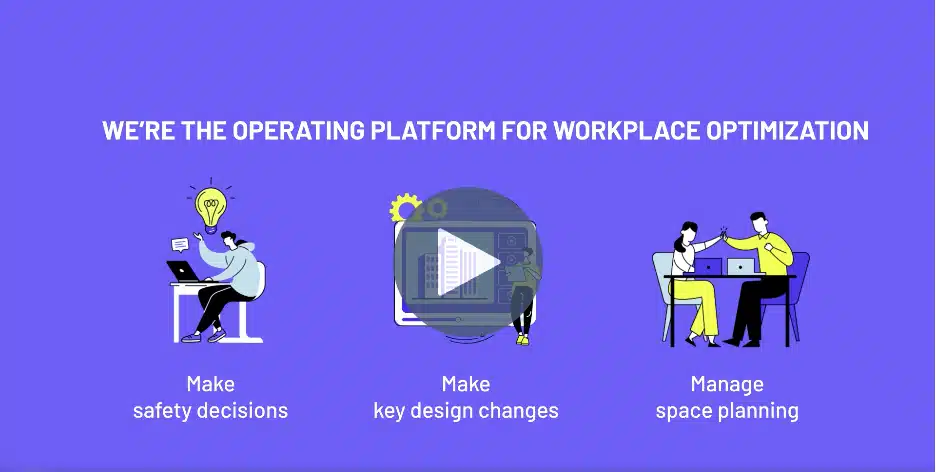In this blog post, workplace design and strategy expert, Mark Wartenberg goes into why corporate workplace standards matter as well as his thoughts about the future of capital projects.
For this blog post, we invited a workplace design and strategy expert, Mark Wartenberg, to share his thoughts about the importance of corporate workplace standards and what he believes is the next generation solution in building standard compliance, as well as capital projects, in general.
With more than 30 years of experience working as an architect, planner, project and program manager, corporate real estate (CRE) executive, and facility manager–Mark has been involved in all facets of the built environment. He also knows first hand how easily design and execution processes within a company can become convoluted and ineffective, and so often decoupled from the reality of execution.
Envisioning and understanding the built environment’s end state
Today, the design process relies on a lot of static and one or two dimensional elements–floorplans, diagrams, finish boards, schedule of values, field sketches, and change orders–to engage the entire spectrum of stakeholders and users. There is often no relatable, single source of truth to summarize the whole “ecosystem” in a way that everyone can understand.
 This adds to the confusion and general inability of most people–including those who are in CRE and facilities–to effectively utilize those tools to envision and understand the built environment’s end state.
This adds to the confusion and general inability of most people–including those who are in CRE and facilities–to effectively utilize those tools to envision and understand the built environment’s end state.
These challenges are particularly apparent when it comes to ensuring corporate building standards are complied with.
Why corporate building standards matter
Over the last 20 years in my career, I’ve created corporate workplace design and construction standards for five large multinational companies.
For any global or even regional real estate portfolio, certain components require a level of consistency in performance to ensure spaces have an equitable and predictable baseline for every employee.
Elements such as: indoor environmental performance, ergonomics, natural and artificial lighting, acoustical performance, accessibility through universal design, sustainable materials and finishes, general building operational health, brand awareness, and engagement–establishing these consistent expectations of the built environment has a positive impact on your company’s brand and most of all, the employee experience. Ensuring equity and consistency of performance encompasses everything we do from construction to final furnishing.
For example, our locations in Europe may use a Herman Miller chair while in the US, they use a Technion chair. The brand of the chair is irrelevant–local teams know their specific markets the best. However, as long as those chairs meet the ergonomic, sustainability, accessibility, and price range performance guidelines set forth in our corporate standards, that’s all that matters. This consistency helps make sure our end-user’s experience in Europe is the same experience as the end-user in the US.
The performance of space is what matters both at the minimum and maximum levels to ensure equity.
Creating consistent performance levels inside your real estate catalog, makes it really easy to track compliance with corporate standards. It’s how me and my team can confidently say, “Everybody in Bangalore, India, got exactly the same level of ergonomics that the people got at HQ in Portland OR.” We’re able to prove our spaces provide a tangible sense of equity with quantifiable data.
Predicting building and space performance
Alongside consistency is clarity–meaning that workplace teams must be very clear on what their standards are and how they are reflected on a floorplan.
When we put our standards into Saltmine for meeting rooms, it enables anyone across the world to create clear room blocks that are already in accordance with the standards and guidelines. We know that if we design a space with these meeting room blocks, they will not only automatically reflect our accessibility requirements–e.g. doors are 12 inches from the jam side, accessible clearances around the room, turning radius requirements, etc.–but further reflect the nuances of our own, unique corporate standards. Things like:
- Room capacity
- Acoustical requirements–wall types, heights, density, ceiling performance, etc.
- Accent walls
- Size of tables with power and data requirements
- Furniture ergonomics
- Brand identity
- AV equipment types, heights, locations, distances
All of these details–often missed with the old ways of designing space are automatically generated inside of that block. Missing these things become very costly if not caught early in the design process.
More importantly, when we miss these details, we aren’t just making costly monetary errors–we are also making it much harder to predict the performance of a space which is one of the cornerstones of why standards exist. With an integrated solution like Saltmine, we can avoid missing nuances and details and deliver more predictable and consistent space performance.
Understanding cost in different places
Another big component of consistency is having a solid understanding of what things will actually cost in different places.
European prices and means of execution are very different from the US, and in the US, different states and city conditions contribute to wide fluctuations in costs.
We all know that projects cost more in NYC than in Portland; however, knowing what costs more and how to then engineer a project to better keep those costs in mind regionally adds to the value of a solution like Saltmine. For example, adding performance standards into Saltmine, along with the regionalized or even localized costs for those elements, provides a trending window both at the high-level for the C-suite as well as the granular level for project planning. With Saltmine, it is possible to engage in true value engineering at early stages and eliminate the cost cutting nightmare that so often happens once a project has begun.
 While understanding the cost of things isn’t necessarily difficult, being able to store all of this typically siloed information in one place eliminates the pain of tracking things down–especially if someone who may have known the details, leaves the company.
While understanding the cost of things isn’t necessarily difficult, being able to store all of this typically siloed information in one place eliminates the pain of tracking things down–especially if someone who may have known the details, leaves the company.
The granular bill of materials in Saltmine is a game changer in this regard. We have specific catalogs for each of our global offices beyond the standard elements for things like branding, speciality spaces and equipment, and bespoke furniture. To be able to summarize the cost of things, relative to their geographic location immediately, makes a huge difference. If our New York City office needs 800 feet of drywall put up, we can easily plug in that cost to the entire bill of materials and have a more accurate summary of project cost before we ask the company for the funding to do the work.
The next generation solution of corporate building standard compliance
When I first saw Saltmine, I couldn’t help but believe that it was the next generation solution for corporate building standards.
Make no mistake, Saltmine could be the “filter” for every capital project because it’s a singular tool that carries a project from conception to final approval, and then on into occupancy and operational management. Even if teams in different countries do conceptual design and schematic design differently, Saltmine’s ability to automatically bring corporate standards to the process can help ensure every employee has the same office experience.  In short, Saltmine helps ensure a level of equity and workplace performance every employee should be entitled to. And for someone who oversees a global real estate portfolio, that’s huge.
In short, Saltmine helps ensure a level of equity and workplace performance every employee should be entitled to. And for someone who oversees a global real estate portfolio, that’s huge.
Strategically designing the offices of tomorrow
As we attempt to build hybrid workplaces for a hybrid workforce, can we really expect pre-pandemic processes for workplace design to work any better in the brave new world of hybrid work?
In my experience, these processes could barely keep up with the dynamic changes required in the workplace before the pandemic. Change needs to happen in how we envision, communicate, program, design, build, and operate the spaces we work in.
Strategically designing the offices of tomorrow will require processes and tools that enable flexibility, agility, and will need to dramatically improve how we communicate with stakeholders. Now, more than ever, this will require a single source of truth if we are to immerse them in the design process in any meaningful way.
To learn more about how Saltmine can be your strategic design partner as you evolve your office to the next normal and beyond–as well as help you simplify the workplace design and strategy process–watch the video below:
Enjoying our blog? Be sure to subscribe to stay up-to-date on Saltmine's original content with the form below!
 by
by 